It looks like you're using an Ad Blocker.
Please white-list or disable AboveTopSecret.com in your ad-blocking tool.
Thank you.
Some features of ATS will be disabled while you continue to use an ad-blocker.
share:
a reply to: beansidhe
It's also then possible you did not have to "die" to travel on them. Or so legend would have it.
I know it's still there. Our litteral state of consciousness is kind of in a matrix made of words.
I like what terrance meckenna says in his speculations about the beings he has encountered on his shamanic journeys. They want us to do something...
Wax poetic?
I found it tied in with this though...
The message is loud and clear or its the dundundunnn... illuminatitanimulli. Hahaha.
It's also then possible you did not have to "die" to travel on them. Or so legend would have it.
I know it's still there. Our litteral state of consciousness is kind of in a matrix made of words.
I like what terrance meckenna says in his speculations about the beings he has encountered on his shamanic journeys. They want us to do something...
Wax poetic?
I found it tied in with this though...
The message is loud and clear or its the dundundunnn... illuminatitanimulli. Hahaha.
originally posted by: beansidhe
a reply to: Wifibrains
That is an excellent post, well spotted! Thinking strings, what a wonderful way of describing it, I love that.
Who are the watermeid?
The "Watermeid" (or Karoo mermaid) has been an integral part of Karoo folklore for years. Stories passed down from parents and grandparents, warn children not to go near deep pools in case the "Watermeid" drags them in and drowns them. Modern man dismissed these stories, saying these stories began as a way to protect children from the dangers of deep water, until archeologists started finding Khoisan "Rock Art" depicting the Watermeid and even groups of these Karoo mermaids.
Trail rider
A drowning water fairy, you say? That's a coincidence.
It's not a coincidence it's universal experiences shared world wide.
originally posted by: Wifibrains
a reply to: beansidhe
It's also then possible you did not have to "die" to travel on them. Or so legend would have it.
Would that have anything to do with hyperventilating or eating fungus? There must be some missing catalyst here. lol
Thousands of holy wells in uk.
www.druidry.org...
Lady well in Glasgow...
en.m.wikipedia.org...
Feminine-lady-well! We could not hide it more in plane sight. Lol
It is an extraordinary thing to consider that there are still literally thousands of holy wells in the British Isles. Most of these are natural springs; some open pools like St.Madron's, while others are contained by a stone edifice, often covered. The majority, however,are in ruins, overgrown and no longer visited.
People visited the wells for their traditional virtues of healing and divination. If a physical cure was sought, the believer would drink or sometimes bathe in the water.
Additional features of the holy wells, along with other sacred features of the landscape such as certain megaliths, caves, trees and lakes,they stand as entrances to the world of spirit - the Otherworld.
This is particularly appropriate because in Celtic mythology the Well of Wisdom stands at the center of the Celtic Otherworld, the spiritual source of all, of which the holy wells of Britain and Ireland are mere tributaries. Early Irish literature tells us how this well gushes up as a fountain in the courtyard of the palace of Manannan mac Lir, the king of the faeries
Supernatural qualities automatically cluster about the manifestation of such a powerful archetype. The holy wells of the British Isles were, in fact, such popular places of worship in pagan times, that the early Roman Church took great pains to stamp them out.
In folk-tradition, the wells were only visited at special times of the year: May or at Midsummer were the most popular, two turning-points of the Celtic year when the gates of the Otherworld were open wide. At these times, too, those Otherworld denizens, the faeries or pixies, were frequently sighted at holy wells. It is not surprising then that a guardian of the Otherworld is usually found overseeing the holy wells of the British Isles.
Although since the Christianization of the wells this figure is generally a saint of either gender, the well-guardian was originally female. Most dealings with the Otherworld in the Celtic tradition are facilitated by a female spirit or goddess. This is particularly so when the Otherworld is located beneath the earth, which in pagan Britain and Ireland, as in most cultures worldwide, was always regarded as feminine.
www.druidry.org...
Lady well in Glasgow...
When Christianity came to Britain, pagan holy and healing wells were aggressively rededicated to the Virgin Mary and other saints while remaining places of Old Religion practice. Also known as 'Our Lady's Well', Glasgow's Ladywell is an artesian spring noted on early city maps and can be reliably assumed to predate the city.
en.m.wikipedia.org...
Feminine-lady-well! We could not hide it more in plane sight. Lol
edit on 2-11-2014 by Wifibrains because: (no reason given)
Just wanted to share some cool dbl disc I saw today.
You might say that they are not dbl disc, they are speakers...

But dont speakers look like this?
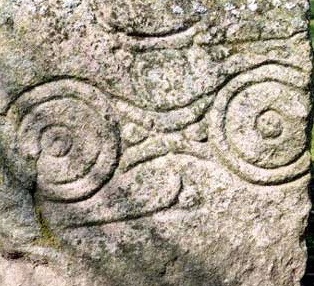
You might say that they are not dbl disc, they are speakers...

But dont speakers look like this?

edit on 5-11-2014 by Wifibrains because: (no reason given)
Check this out at 6:19, fish or beasty tattoo.
edit on 6-11-2014 by Logarock because: n
originally posted by: Logarock
a reply to: beansidhe
Something for one and all. From the Port of the Gauls.
Just a note. The music on this vid sounds like Welsh traditional. Very much so more than anything of other Celtic music. What do you think? The pipes mostly, high pitch very little base and fiddle sounds more welsh than Irish. Anyway no matter enjoy.
I was looking for pictish stones located near wells. Keeping with the current theme of the thread of coarse, I found this...
www.pictishstones.org.uk...
There was a picture of the entrance to a pictish well in burghead, moray.
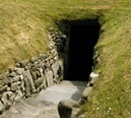
en.m.wikipedia.org...
www.historic-scotland.gov.uk...
So the Christians had the same idea as the Picts, only with a Christian interpretation. Baptism into the Holy Spirit via holy water. Leading the crowds away from the wells and into churches. "Holy water" is now blessed by a priest and natural "living" water supply is cut off... Or is it?
www.legendarydartmoor.co.uk...
en.m.wikipedia.org...
Wow, just around the corner from me, I had no idea, and even more telling is that I live in a place called warden springs! Water dribbles out of the ground at the top if the hill.
It makes so much sense.
Mind blown, experiences confirmed.

Adomnán’s biography of Columba reports that the pagan Picts believed in powers associated with deep water. In this they would be no different from peoples throughout Britain in the first millennium AD, when many pagan holy springs were blessed and adopted by the new Christianity. Wells and springs were associated with healing, and Pictish burial grounds were often sited next to them.
www.pictishstones.org.uk...
There was a picture of the entrance to a pictish well in burghead, moray.

Burghead is a small town in Moray, Scotland, The present town was built between 1805 and 1809, destroying in the process more than half of the site of an important Pictish hill fort.
The fort was probably a major Pictish centre and was where carved slabs depicting bulls were found; they are known as the "Burghead Bulls". A chambered well of some considerable antiquity was discovered in 1809 and walls and a roof were later added to help preserve it.
en.m.wikipedia.org...
Prior to 1808, a green hollow was visible in the NE corner of the fort. Tradition held that it was a well. In 1809 the ‘well’ was excavated to serve as a municipal water supply. This led to the discovery of a chamber, 5m square and 4m high, together with a 3m square cistern and a flight of steps leading down to them, all cut out of solid rock. The cistern had a free-standing stone pedestal in one corner and a basin cut into another.
The date when the ‘well’ was made is not known; nor to we know how it was used. It seems too extraordinary a feature simply to have served as a water supply for the fort. Theories about its function include a shrine to Celtic water deities, a place of ritual execution and an early Christian baptistry. Perhaps the most plausible is that of a Pictish cult centre, later converted to some Christian use. A rock-cut well, identified by some as an early Christian baptistry associated with the local cult of St Ethan.
www.historic-scotland.gov.uk...
So the Christians had the same idea as the Picts, only with a Christian interpretation. Baptism into the Holy Spirit via holy water. Leading the crowds away from the wells and into churches. "Holy water" is now blessed by a priest and natural "living" water supply is cut off... Or is it?
But what is the fascination with well-heads and springs that even today urges us to toss a coin into their mystical waters in some vain hope of receiving a blessing or piece of good luck? For a hint of the answer one must delve back into the prehistoric pagan days when springs were regarded as being the portal between the underground world where the spirits dwelt and that of the living. It appears that our ancestors have always sought help for cures, vengeance, repentance or improvement in fortunes by depositing votive offerings to the deities associated with water sources.
www.legendarydartmoor.co.uk...
Among the earliest enthusiasts for holy wells in modern times was the Neopagan movement, for whom wells formed part of 'earth mysteries' study along with ley lines and ancient sites; the view that the Christians had ‘stolen’ holy wells from the Pagan religions fitted in well with their position.
The Chalice Well at Glastonbury (Somerset) is at the centre of a Neopagan- and New Age-orientated spirituality and retreat centre. Other wells, however, are often visited on an informal basis for religious or sightseeing reasons. New forms of holy well reverence continue to emerge now and again, notoriously the so-called Well of the Triple Goddess at Minster-in-Sheppey (Kent).
en.m.wikipedia.org...
Wow, just around the corner from me, I had no idea, and even more telling is that I live in a place called warden springs! Water dribbles out of the ground at the top if the hill.
It makes so much sense.
Mind blown, experiences confirmed.

edit on 8-11-2014 by Wifibrains because: (no reason given)
a reply to: Logarock
I do agree, although I want to call it Milesian music! I'm only half joking, it could be, so easily.
Anyway, tattoos is a brilliant idea. I think the one in the video could be this:

This is very afanc-y, it even has the hair/horn. But then so does this if you consider it as Scorpio:

How wonderful it would be if we could find that Scythians or Thracians had a similar beast in their zodiac, or even if they had a zodiac - I haven't found that yet. Urgh, I need more hours in the day!
I do agree, although I want to call it Milesian music! I'm only half joking, it could be, so easily.
Anyway, tattoos is a brilliant idea. I think the one in the video could be this:

This is very afanc-y, it even has the hair/horn. But then so does this if you consider it as Scorpio:

How wonderful it would be if we could find that Scythians or Thracians had a similar beast in their zodiac, or even if they had a zodiac - I haven't found that yet. Urgh, I need more hours in the day!
edit on 8-11-2014 by beansidhe because: sp
Whoa check this out.
They plonked a church right in the middle!
There could also be a connection to a leyline here too as the neighbouring town is named Leysdown.
I should get myself some dowling rods lol.
Minster Abbey stands on the site of an earlier worshipping site. The Abbey itself is built in the centre of a former Druid or pre Druid place of worship. The site is marked by the ‘Minster Triangle’, the triangle is formed by three ancient healing wells. Excavations of the wells found artifacts that proved the wells were used for worship of the Celtic triple headed fertility goddess. A three headed metal cast, depicting a heavily pregnant goddess who is squatting in an ancient position of childbirth over the main well. This well is now known as the well of the triple goddess. Also found was a broken beeswax picture of the goddess, it is believed the picture was broken up and dropped down the well as an offering to the goddess. The wells have been dated to approximately 1500BC, some people still believe the water from the main well can help fertility.
They plonked a church right in the middle!
There could also be a connection to a leyline here too as the neighbouring town is named Leysdown.
I should get myself some dowling rods lol.
edit on 8-11-2014 by Wifibrains because: (no reason given)
a reply to: Wifibrains
Hello, great timing!
So you live at the Well of the Triple Goddess? You rock, I bow to you now!
The Burghead Well, I remember that now. There's another somewhere that I now want to find. I haven't had a chance to reply to anyone these last few days, so apologies.
What I was thinking about was the well found with the Pictish horseshoe over it t Clatt, this one if my memory serves me:
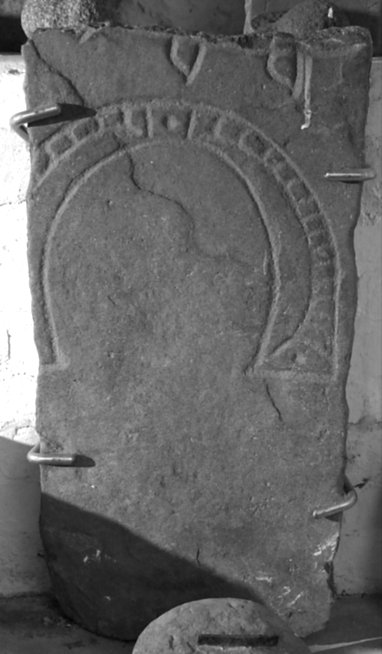
Wait till I find that other well, I saw it again the other day.
Also, yes the speakers look uncanny. Seeing Scorpio/ beastie now I can't believe it was so obvious - hidden in plain sight, lol! But the double discs could be the same, an open mind is so important for them. I can't shake the feeling I'm going to kick myself when we figure them out.
Hello, great timing!
So you live at the Well of the Triple Goddess? You rock, I bow to you now!
The Burghead Well, I remember that now. There's another somewhere that I now want to find. I haven't had a chance to reply to anyone these last few days, so apologies.
What I was thinking about was the well found with the Pictish horseshoe over it t Clatt, this one if my memory serves me:

Wait till I find that other well, I saw it again the other day.
Also, yes the speakers look uncanny. Seeing Scorpio/ beastie now I can't believe it was so obvious - hidden in plain sight, lol! But the double discs could be the same, an open mind is so important for them. I can't shake the feeling I'm going to kick myself when we figure them out.
a reply to: Wifibrains
You should, dowse and see where you end up!
That's interesting, the wells formed a triangle. It reminds me of this:

I don't know why, but this stone seems to suggest that the triple disc is cutting the crescent (moon?) in three.
You should, dowse and see where you end up!
The site is marked by the ‘Minster Triangle’, the triangle is formed by three ancient healing wells. Excavations of the wells found artifacts that proved the wells...
That's interesting, the wells formed a triangle. It reminds me of this:

I don't know why, but this stone seems to suggest that the triple disc is cutting the crescent (moon?) in three.
a reply to: beansidhe
I had to dig a little deeper into this, and a visit to the site might be in order me thinks.
www.kenthistoryforum.co.uk...
There is a 4th well in minster. Not one of those that create the minster triangle. I have walked right passed it many times going into the chip shop, and never noticed it. It is only a stones throw from minster abbey.
www.megalithic.co.uk...
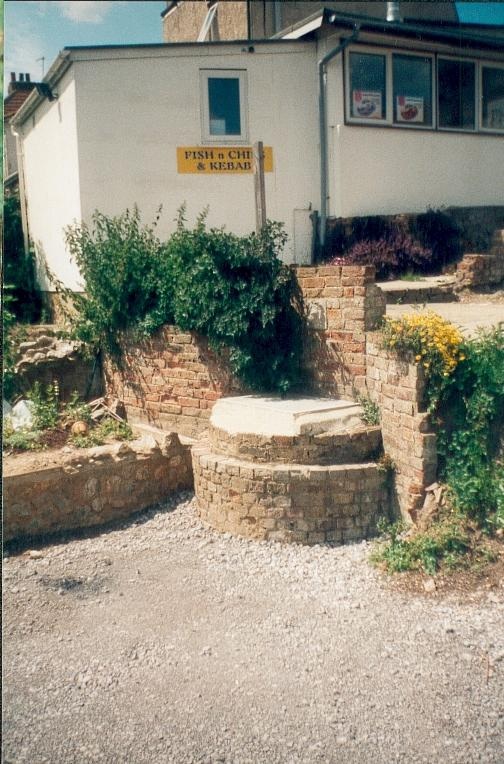
I had to dig a little deeper into this, and a visit to the site might be in order me thinks.
Sometimes with creative inspiration you can contact the essences of well priestesses in the Celtic tradition in even the most neglected urban well shaft or pipe that may be the only sign that the sacred waters still flow.
The Isle of Sheppey in Kent where Water, Sky and Earth converge is perhaps best known for the heavy industrialisation of the surrounding River Thames or the caravan and chalet sites that provide a haven for Londoners. But local historian, author and archaeologist Brian Slade has pieced together the story of the sacred wells of Sheppey and the ancient abbey, Monasterium Sexburgha and in doing so has come across evidence of the Druidesses who once tended the sacred waters.
Other historians share his view that Sheppey may have been the last remote stronghold of the old Druidical rites in England.
www.kenthistoryforum.co.uk...
There is a 4th well in minster. Not one of those that create the minster triangle. I have walked right passed it many times going into the chip shop, and never noticed it. It is only a stones throw from minster abbey.
This site, called The Birth Bracelet Well or the Garden Centre Well as its location is within the auspices of a Minster Garden centre car park. Little was known of the well among locals, but excavation revealed coins dating to at least 1600s, and shreads of pottery. The so-called bracelet was found at the deepest layers, and believed to be the oldest artefact in the well. Its exact age and origin may be unclear, but its small size suggests that it was indeed intended to be placed on a newly born infant’s wrist. Further research may indicate its true meaning and whether we can truly refer to the site as a holy well.
The Minster Garden Centre has now moved to opposite the site of the Birth Bracelet Well which can be located at 29 the High Street, below a fish and chip shop. It is capped however.
www.megalithic.co.uk...

edit on 9-11-2014 by Wifibrains because: (no reason given)
originally posted by: beansidhe
That's interesting, the wells formed a triangle. It reminds me of this:
I don't know why, but this stone seems to suggest that the triple disc is cutting the crescent (moon?) in three.
Well it seem to have a triptych impression about it. Perhaps pepicting a connection or balance "between" masculine and feminine? Showing the threefold nature of both, if you assume the triple disc is the sun...
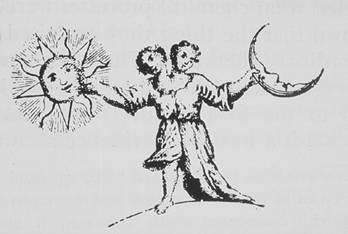
edit on 9-11-2014 by Wifibrains because: (no reason given)
a reply to: Wifibrains
That's Interesting! I LIKE that!!
The 1st sketch on Galileos pad... to me... looks like a cross-section of Saturn and the rings (As if you cut a slice straight down through the middle of the planet).
Could the "cauldron" triple discs represent Saturn?
hmmmmm
G
That's Interesting! I LIKE that!!
The 1st sketch on Galileos pad... to me... looks like a cross-section of Saturn and the rings (As if you cut a slice straight down through the middle of the planet).
Could the "cauldron" triple discs represent Saturn?
hmmmmm
G
a reply to: Gordi The Drummer
Well G. It could be. It would seem saturn is often referred to, perhaps intuitively/metaphorically/poetically? As a cauldron.
cosmicpower.tumblr.com...
books.google.co.uk... X&ei=ioNiVLa8NorU7AbAvoHICg&ved=0CB0Q6AEwATgK
photojournal.jpl.nasa.gov...
Maybe?
Well G. It could be. It would seem saturn is often referred to, perhaps intuitively/metaphorically/poetically? As a cauldron.
Saturn’s high north is a seething cauldron of activity filled with roiling cloud bands and swirling vortices.
cosmicpower.tumblr.com...
Like Jupiter, Saturn seems to be a bubbling cauldron of liquid gases.
books.google.co.uk... X&ei=ioNiVLa8NorU7AbAvoHICg&ved=0CB0Q6AEwATgK
At the center of the cauldron of storms spinning around the south pole is the south pole itself, which literally appears to be the eye of this vast polar storm system.
photojournal.jpl.nasa.gov...
Maybe?
edit on 11-11-2014 by Wifibrains because: (no reason given)
originally posted by: Logarock
originally posted by: Wifibrains
a reply to: beansidhe
It's also then possible you did not have to "die" to travel on them. Or so legend would have it.
Would that have anything to do with hyperventilating or eating fungus? There must be some missing catalyst here. lol
Henbane.
The huge bank and ditch of the enormous circle-henge of Balfarg was used as a ceremonial centre from around 3,700 BC onwards. A Causeway was left at the north-east. On the central plateau, nearly sixty metres across, the people put up a ring of timbers whose posts increased in size and width towards the south-west, where two colossal trunks stood. This impressive circle was later replaced by a stone circle of ten or eleven stones.
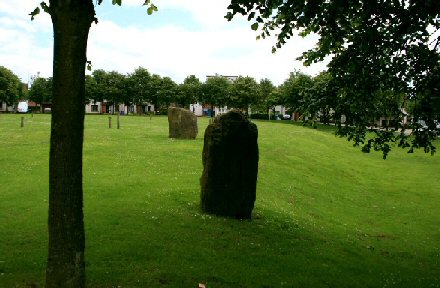
The Use of Henbane as a Hallucinogen at Balfarg:
The specialist report included in the excavation publication identified high pollen values and seed numbers of henbane (Moffat 1993). Organic residues adhering to pottery sherds, which had been broken and often scorched at the time of deposition, were examined by Moffat. The context of these sherds, associated with what has been identified as a ritual monument, and the manner of deposition, has been interpreted as ritual activity. The presence of henbane in significant concentrations has been interpreted as the use of a hallucinogenic drug, as part of these ritual activities. To date, excavations at other `ritual' sites have not been able to produce comparable evidence for the use of poisonous or hallucinogenic plants at these sites (Long 1998) and Balfarg is unique in this respect. However, this evidence has been used to support theories of the use of hallucinogenic drugs in the Scottish Neolithic and parallels have been drawn to the use of other members of the Solanaceae in South America and Australia (Sherratt 1996).
Ancient wisdom
Look at the seed pods on henbane:
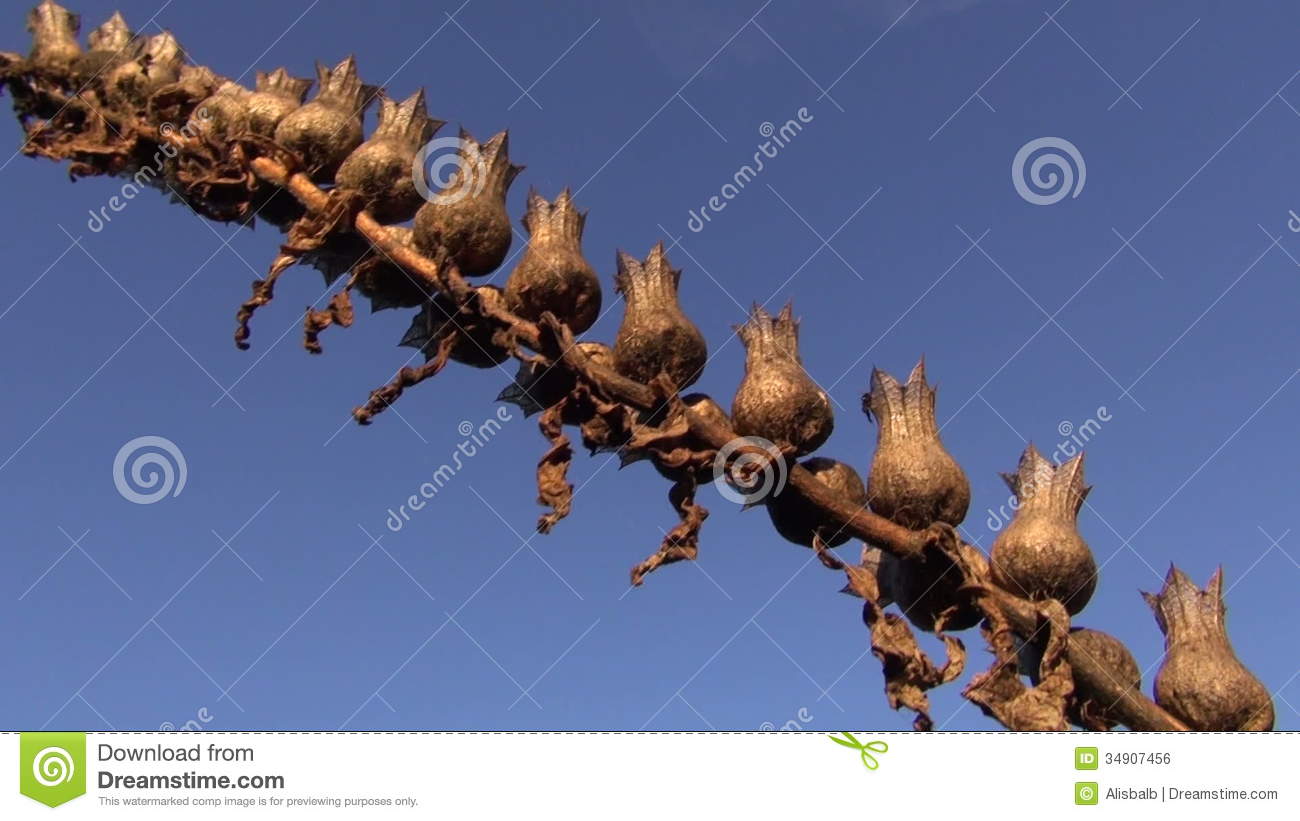
They couldn't be...?


And the only reason I know that, is because of this oh-so-strange coincidence:
In Greek mythology, the dead who wander the shores of the River Styx are crowned with henbane, most likely because of its real life ability to make one forget oneself. Greek oracles were said to breathe the smoke of this baneful Saturn herb in order to divine the future.
Alchemy works
new topics
-
President BIDEN's FBI Raided Donald Trump's Florida Home for OBAMA-NORTH KOREA Documents.
Political Conspiracies: 4 hours ago -
Maestro Benedetto
Literature: 5 hours ago -
Is AI Better Than the Hollywood Elite?
Movies: 5 hours ago -
Las Vegas UFO Spotting Teen Traumatized by Demon Creature in Backyard
Aliens and UFOs: 9 hours ago -
2024 Pigeon Forge Rod Run - On the Strip (Video made for you)
Automotive Discussion: 10 hours ago -
Gaza Terrorists Attack US Humanitarian Pier During Construction
Middle East Issues: 10 hours ago -
The functionality of boldening and italics is clunky and no post char limit warning?
ATS Freshman's Forum: 11 hours ago
top topics
-
President BIDEN's FBI Raided Donald Trump's Florida Home for OBAMA-NORTH KOREA Documents.
Political Conspiracies: 4 hours ago, 25 flags -
Krystalnacht on today's most elite Universities?
Social Issues and Civil Unrest: 15 hours ago, 9 flags -
Supreme Court Oral Arguments 4.25.2024 - Are PRESIDENTS IMMUNE From Later Being Prosecuted.
Above Politics: 15 hours ago, 8 flags -
Weinstein's conviction overturned
Mainstream News: 13 hours ago, 8 flags -
Massachusetts Drag Queen Leads Young Kids in Free Palestine Chant
Social Issues and Civil Unrest: 12 hours ago, 7 flags -
Gaza Terrorists Attack US Humanitarian Pier During Construction
Middle East Issues: 10 hours ago, 7 flags -
Las Vegas UFO Spotting Teen Traumatized by Demon Creature in Backyard
Aliens and UFOs: 9 hours ago, 6 flags -
Meadows, Giuliani Among 11 Indicted in Arizona in Latest 2020 Election Subversion Case
Mainstream News: 12 hours ago, 5 flags -
2024 Pigeon Forge Rod Run - On the Strip (Video made for you)
Automotive Discussion: 10 hours ago, 4 flags -
Is AI Better Than the Hollywood Elite?
Movies: 5 hours ago, 3 flags
active topics
-
SHORT STORY WRITERS CONTEST -- April 2024 -- TIME -- TIME2024
Short Stories • 23 • : DontTreadOnMe -
Supreme Court Oral Arguments 4.25.2024 - Are PRESIDENTS IMMUNE From Later Being Prosecuted.
Above Politics • 86 • : Irishhaf -
President BIDEN's FBI Raided Donald Trump's Florida Home for OBAMA-NORTH KOREA Documents.
Political Conspiracies • 16 • : Astyanax -
Truth Social goes public, be careful not to lose your money
Mainstream News • 130 • : Astyanax -
Las Vegas UFO Spotting Teen Traumatized by Demon Creature in Backyard
Aliens and UFOs • 11 • : AwakeNotWoke -
Is AI Better Than the Hollywood Elite?
Movies • 13 • : Justoneman -
Hate makes for strange bedfellows
US Political Madness • 47 • : 19Bones79 -
-@TH3WH17ERABB17- -Q- ---TIME TO SHOW THE WORLD--- -Part- --44--
Dissecting Disinformation • 689 • : daskakik -
University of Texas Instantly Shuts Down Anti Israel Protests
Education and Media • 265 • : Astrocometus -
Gaza Terrorists Attack US Humanitarian Pier During Construction
Middle East Issues • 27 • : ToneD

